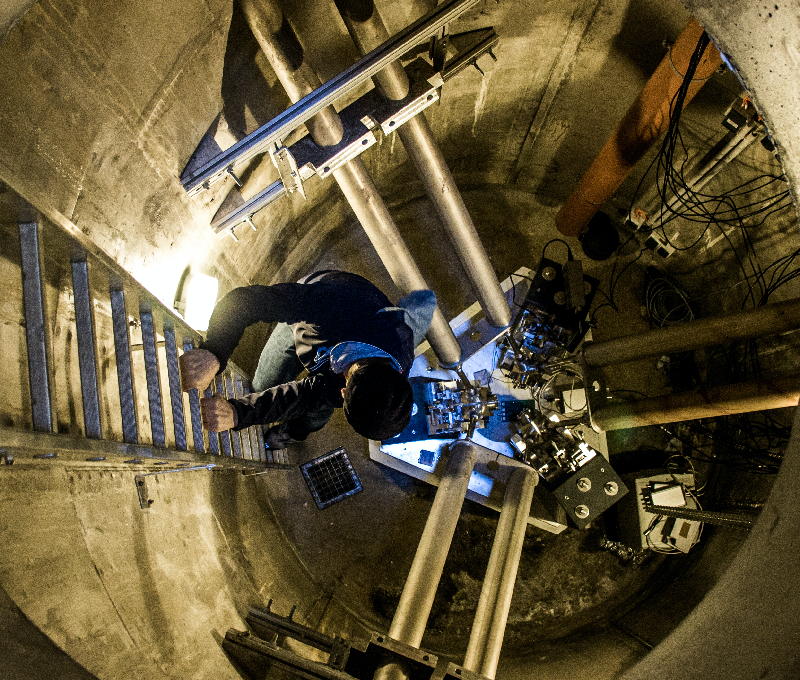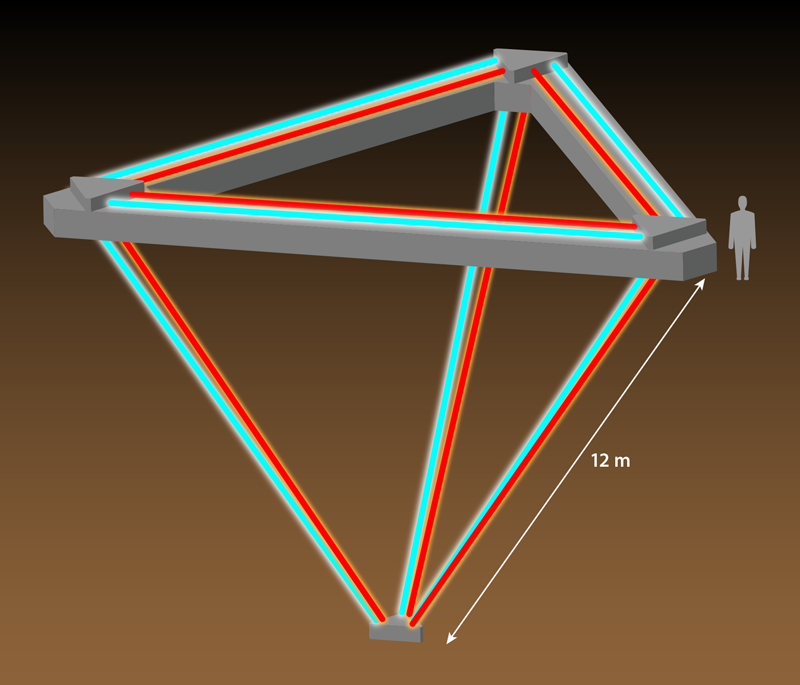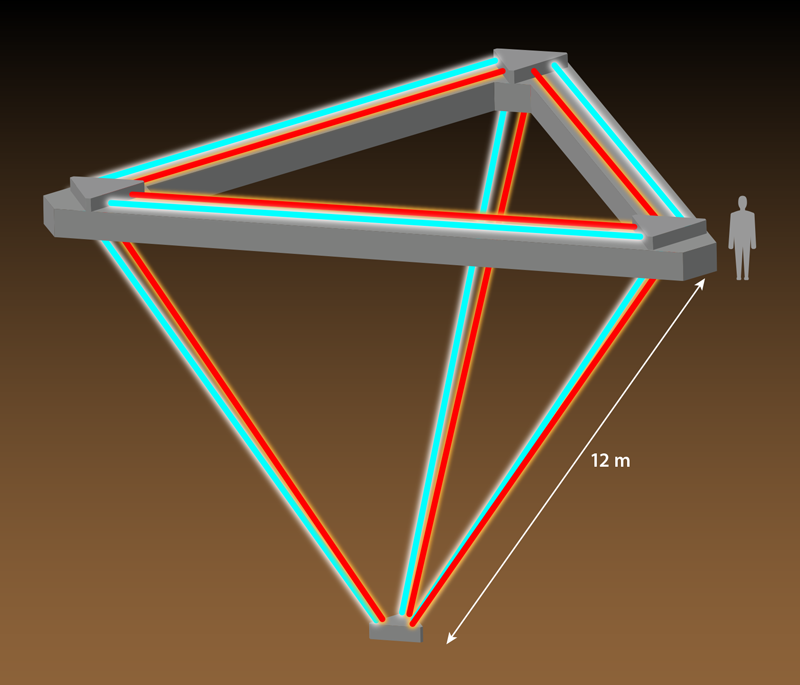Real-Time Measurements of Earth’s Spin and Tilt
Earth’s rotational velocity and axis orientation experience constant fluctuations caused by changes in the planet’s interior, in the oceans, and in the atmosphere. Researchers now report the first continuous measurements of these miniscule fluctuations, using an arrangement of four laser gyroscopes buried underground in Germany. Data from this new facility will be important for maintaining up-to-the-moment accuracy for GPS-based navigation.
Many effects, including ocean currents and the motion of the atmosphere and ice shelves, contribute to fluctuations in Earth’s center of mass and, therefore, in its axis orientation and rotational velocity (collectively known as the rotation vector). Accurate GPS navigation requires that these fluctuations be known by the GPS satellites, which allows the spacecraft to determine their exact positions relative to the surface.
The current gold standard for measurements of Earth’s rotation vector comes from very long baseline interferometry (VLBI), which involves radio receivers around the world. The receivers use the slight differences in the times at which they detect sudden changes in the microwave emissions from very distant quasars to precisely determine their own positions. This information allows them to monitor small changes in Earth’s orientation with respect to these far-away objects. But it can take days to translate VLBI observations into the final, useful results. A rotation sensor at a single location could provide an independent measurement and could allow the data to be available continuously.
Such a rotation sensor could be a laser whose cavity is arranged in a closed loop, called a ring laser. In a traditional linear laser, the cavity has mirrors at each end, and their separation determines the wavelength produced. A ring laser cavity is often a triangle of gas-filled tubes, and it generates two light beams that travel in opposite directions around the loop. If the structure is rotating, the beam moving in the direction of rotation must travel a longer distance to complete one circuit than the oppositely directed beam, which leads to two slightly different wavelengths. The interference of these beams produces a pattern that indicates the rotation rate.
Ring lasers were developed in the 1990s for measuring Earth’s motion. They used helium and neon in the tubes for the laser medium, and they were square or triangular, with sides that were several meters long. But a single ring laser can only detect rotation in a single plane. A system that instead uses four triangular ring lasers arranged as the faces of a tetrahedron can supply full 3D information on Earth’s rotation vector. Any three of the four sensors can provide the data, while the fourth allows for redundancy. This tetrahedral structure, measuring 12 meters on a side, was built and buried below-ground near Munich in 2016. It’s the centerpiece of the Rotational Motions in Seismology (ROMY) facility—the first full-scale use of a multicomponent ring laser to measure Earth’s motion.
Now ROMY has a result to show for its efforts. Following 47 days of continuous data collection, Ulrich Schreiber of the Technical University of Munich and his colleagues have determined Earth’s rotation vector with high precision. ROMY is sensitive enough that the team could report that Earth’s poles deviated by less than 1 arc second ( 4.8×10−6 radians) on average from their mean positions over the measurement time. The researchers also found that the rotational velocity deviated from a constant value by no more than 2 nanoradians per second, indicating a sensor stability of 5 parts in 105.
These results demonstrate by far the highest sensitivity and stability of any optical interferometer measuring Earth’s motion, says Schreiber. “We’re getting to a point where watching the Earth’s motion in real time is becoming a reality.” But he says that the performance in this initial test is still far short of VLBI systems.
Johannes Böhm, who works on VLBI at the Technical University of Vienna, is impressed. “The fascinating aspect is that one can measure rotation variations with just one instrument at the Earth’s surface, without observing satellites or extragalactic radio sources,” he says.
ROMY will not, however, render satellite measurements obsolete. As ROMY’s sensitivity and precision become more sophisticated through technical improvements, such as further stabilization of the laser cavities, its continuous observations will be complementary to space-based ones. Schreiber sees advanced ring lasers providing “short-term, high-resolution measurements, while satellite systems and VLBI ensure the long-term stability.”
This research is published in Physical Review Letters.
–Rachel Berkowitz
Rachel Berkowitz is a Corresponding Editor for Physics Magazine based in Vancouver, Canada.






